Quarterly Updates: The Rebirth of Spring
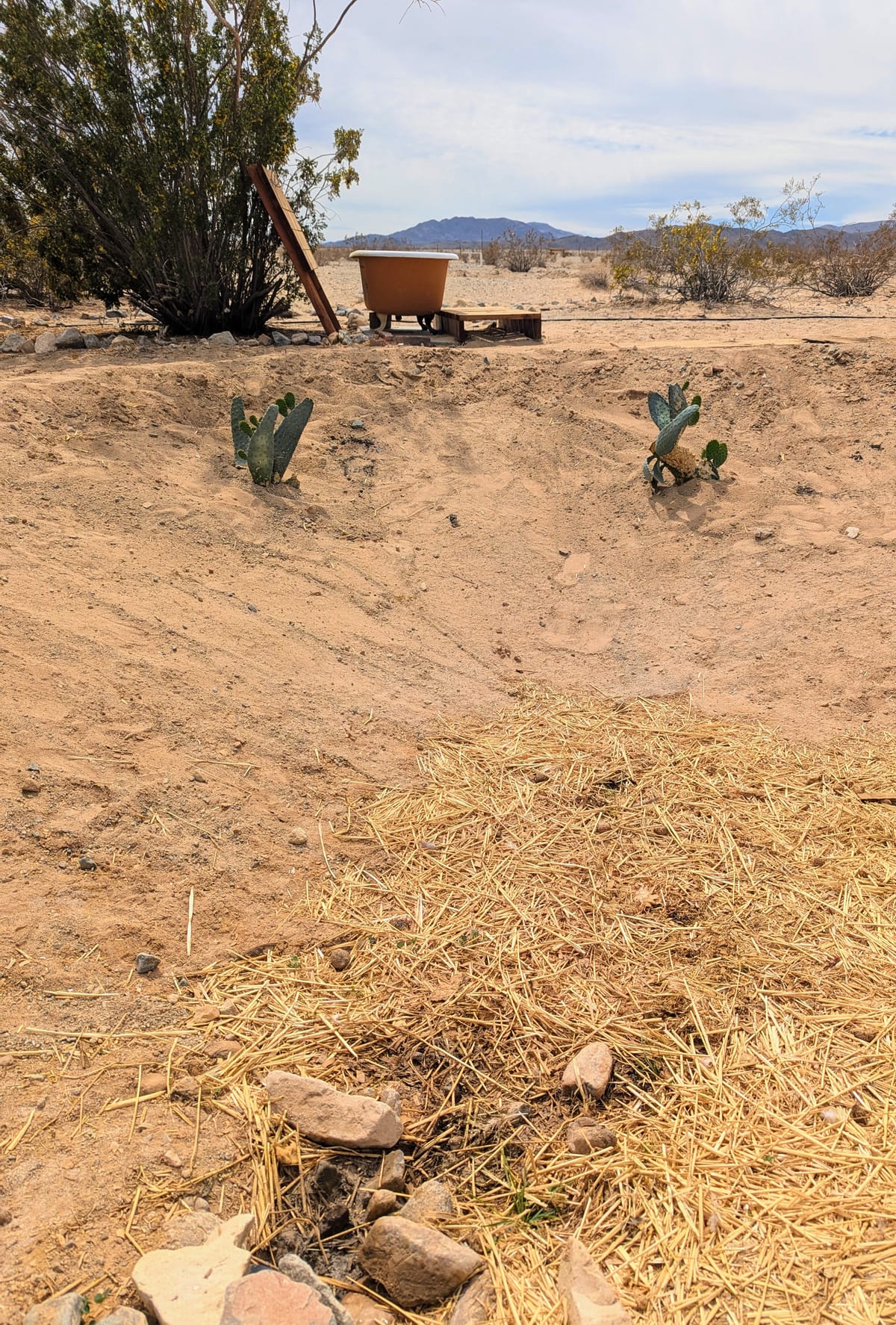
Greetings from the Holy Mojave in its period of yearly renewal: as heat returns to us with the return of the Sun to the Northern hemisphere, so, too, does life begin its frantic rush to living before the heat slows it temporarily. We experienced the Spring Equinox on March 20th, and so return and rebirth are on our minds.
We believe that humans are a keystone species, and that our role is the careful stewardship of the ecosystems we a a part of. This belief underpins our philosophy and intention, and serves as the basis for the work of sowing seeds and routing water, allocating resources to plants and animals that serve the land as we do.
This is our first release of a continuous series of quarterly updates aligning with our Wheel of the Year observances and so we will, just this once, start from the beginning. We hope each quarterly update reminds you how capable you are to make the changes you wish to see in your own community, your own landbase.
The Beginning
We arrived to this property for the first time in May of 2022, and were taken aback by how still the land was. Not a whisper, not a bird disturbed the uncanny silence. The other houses we’d looked at in Joshua Tree or Yucca Valley hid lizards in corners, handfuls of birds fluttering from creosote bushes in their yards, but here there were only bones against the back fence, and everywhere inside the house was dust and the remnants of cigarette smoke. Silent as it was, however, it called to us. We knew.
As we nested within the house, breathing new life into it, and exploring the property, we took in stride the reality of it: outbuildings filled with junk, an enormous pile of trash in the back, even the cacti had withered and died. It felt lifeless.
So we threw a party.
Several of our friends came and stayed the week, helping us with trash removal and prettifying the outbuildings. One of our friends created a lighting installation that utilized the creosote, we built furniture to relax on outside, and we made walking paths with the abundant stones. Something came alive that week, and hasn’t left us since.
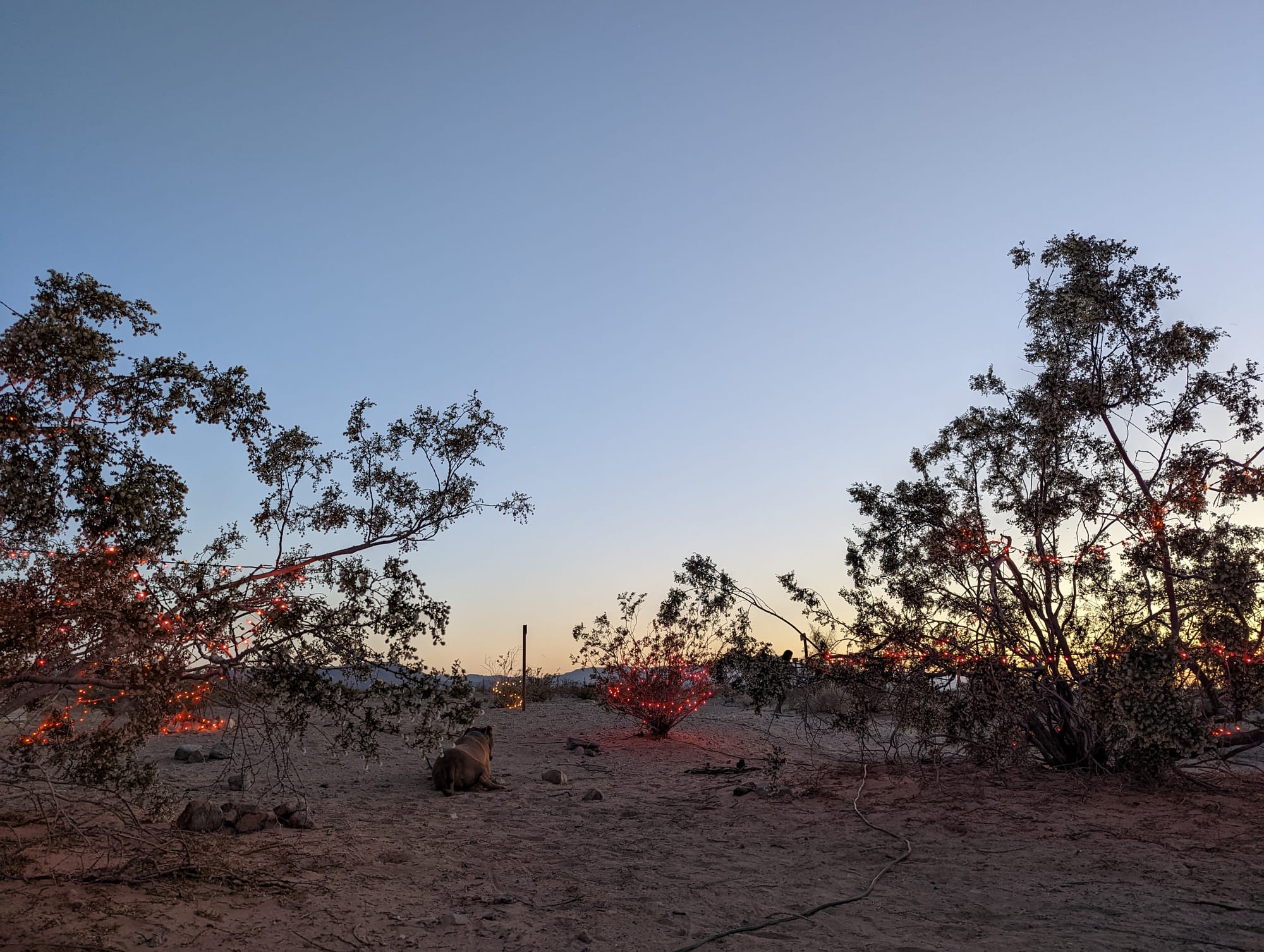
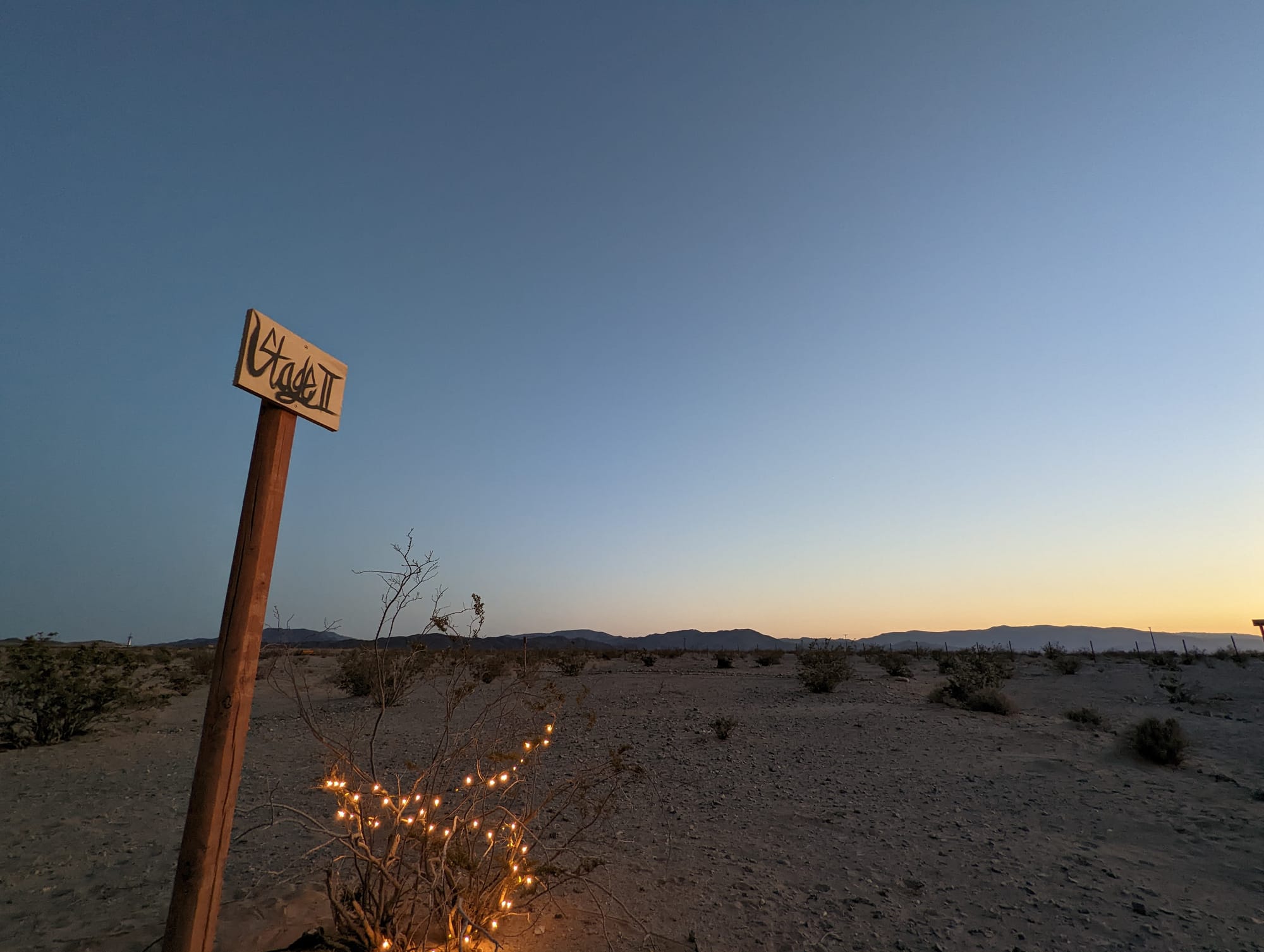
Lighting installation by Wilton James & pre-party preparations. Most of the trash has been removed, but the land was still quite bare.
Both of us have lived in communal spaces before, but the kind of shared work that occurred then gave us insight into what was truly possible with the right alchemy of people coming together who were passionate about a goal. We realized the potential for reconnection and renewal that came from distancing oneself from ones environment and life pressures in exchange for working with the earth. It was really this event that drove everything that came after, and we have so much gratitude for everyone who came and was a part of this realization.
The Path
In May of 2023, we planted our first 9 trees and an array of medicinal and food herbs. We planted the trees as though landscaping: the way the nursery recommended, in a volcano shaped berm mulched with straw and rocks. A few didn’t make it, and we realized that most species of tree were useless here if not planted properly. We began reading about permaculture and rainwater catchment techniques, and decided to begin excavating the land by hand. With every scoop of our shovel we grew closer to la tierra, our earth. Bring the roots downwards, encourage the water to flow down to them, and you create a situation that enables the trees to drill their roots deep for water and nutrients, pulling water down closer to our aquifer and making the trees stronger against winds and drought.
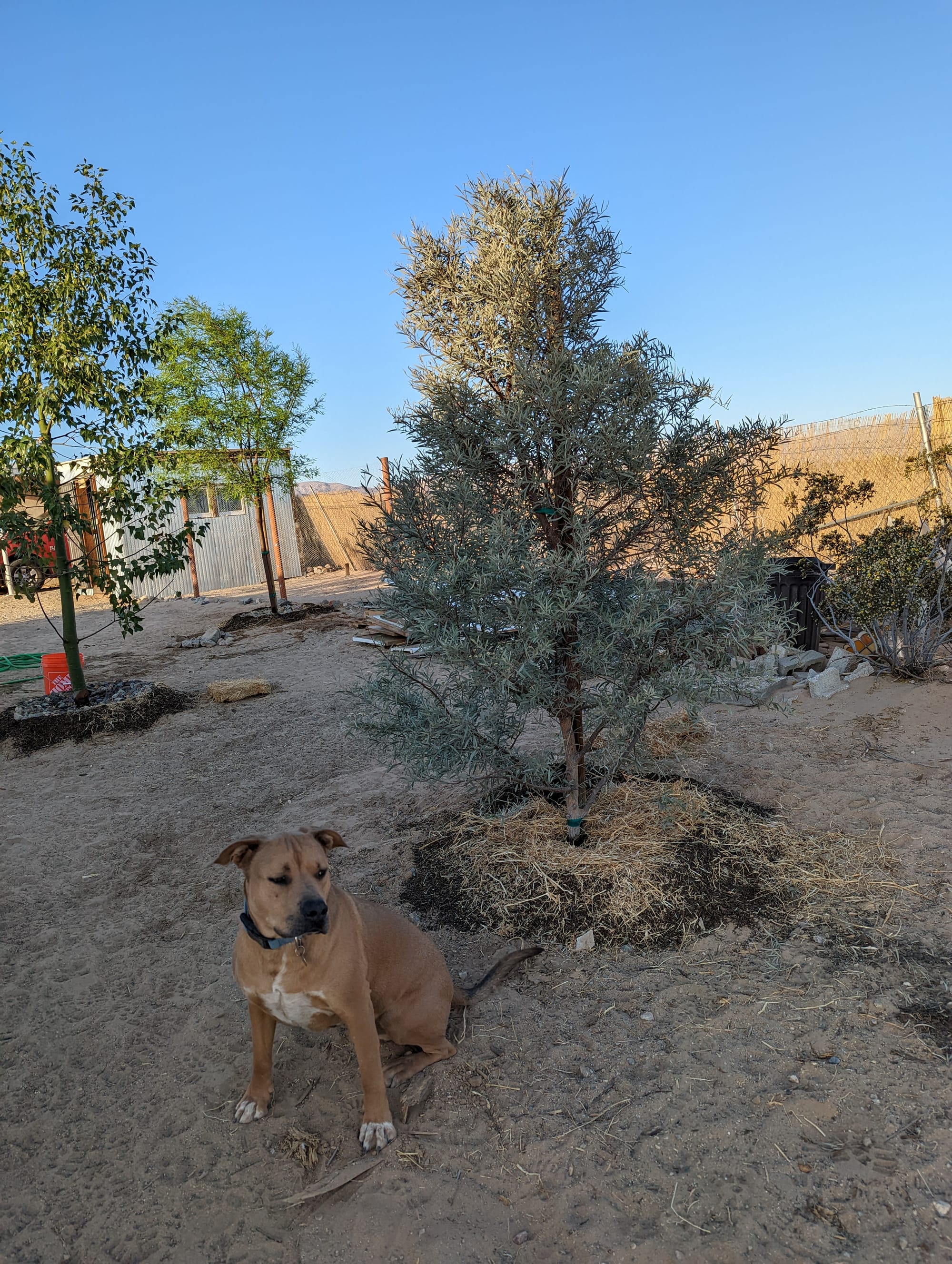
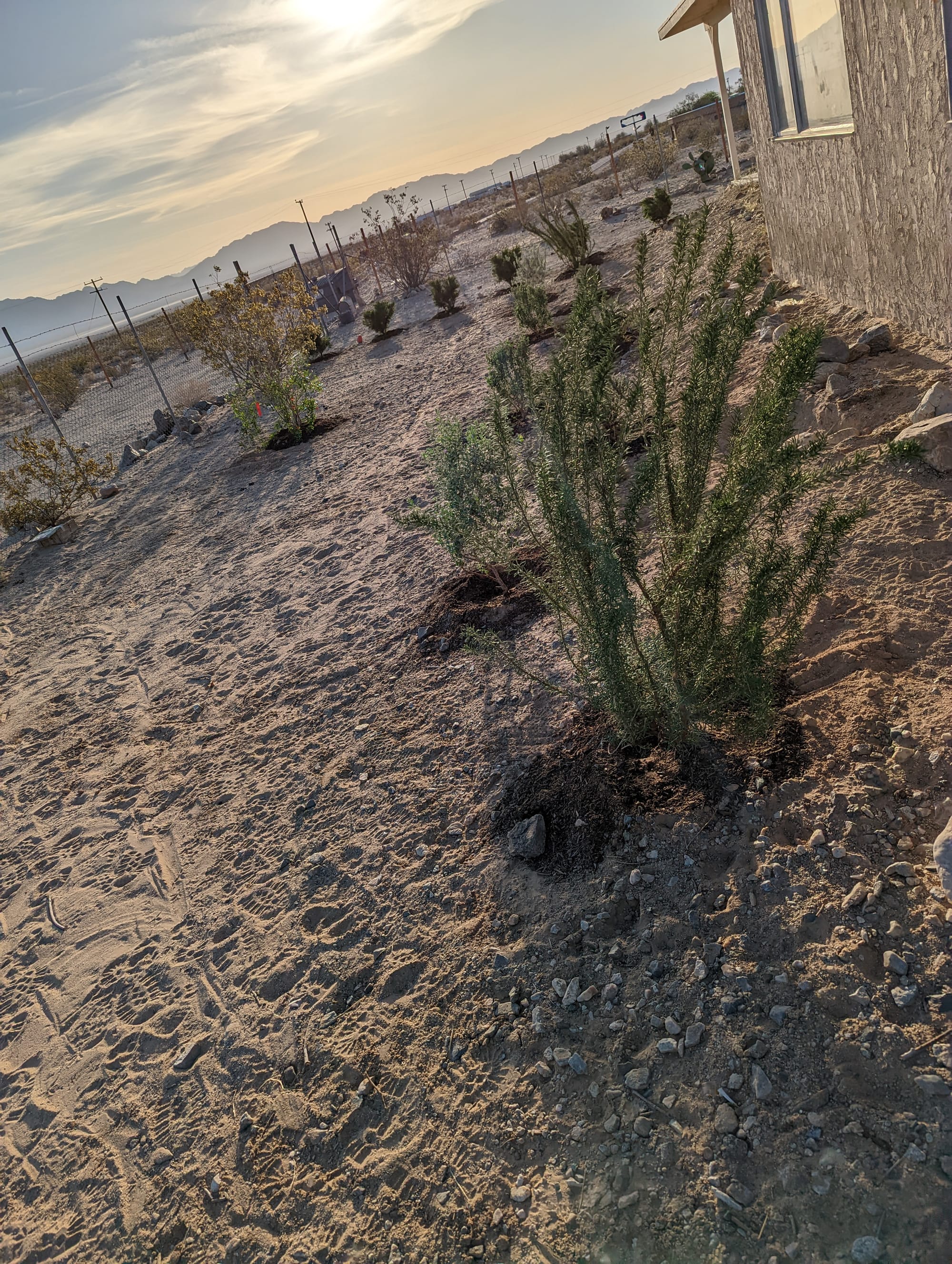
Left: Diego by three of the first trees we planted. The center tree did not survive. Right: The first herbs we planted. About half have survived and are currently still thriving.
We learned from farmers in other arid lands that you cannot have a healthy ecosystem without animals, and so we began planning infrastructure projects that would enable us to raise ruminants and poultry, all essential to a functioning ecosystem. We read about the potential for holistic management – a carefully monitored system of intensive grazing with livestock – to restore degraded soil, sequester carbon, and provide food.
In 2024, we welcomed our first flock of chickens. A mixed flock I now refer to as our “rescue” chickens: we purchased them from an enthusiastic albeit misguided hobby farmer nearby who had them in dreadfully understimulating conditions and on a diet that left them featherless and malnourished. Despite advice to the contrary, we brought them home and fixed their diet and environment, and wound up with a delightful flock of surprisingly productive layers. They taught us about the power of poultry on a small plot of land: destructive if improperly managed, but brilliant composters, efficient sources of nutritious food, and excellent pest control. A year later we engaged in the controversial act of butchering this flock for food with reverence, alongside a group of dedicated WWOOF guests. This act taught us a lot about what it takes to feed us, as well as what it takes to return to connection with our food. As we raise our second (and soon, our third) flock of chickens and soon welcome goats and other animals, we keep these lessons in mind and raise all these beings with reverence.
We now have three compost toilets on the property and have done away with flush toilets and their atrocious water waste altogether. As we look to close cycles and return all of our nutrients to the land, we have found that the most efficient way to compost this material is a form of in-ground composting that will eventually be paired with the planting over of cover crops. After a year and a half of trial and error, we found that it is not feasible to be successful with above-ground aerobic composting at scale in such a dry environment: each compost heap takes approximately 20 gallons of water a day and still dries out and dies in the middle of summer. The brilliant side effects (that some gardeners would lament) is the return of endangered kangaroo rats, local ground squirrels, several species of snakes, and a variety of lizards who enjoy feasting on what we put underground. All of these animals are more efficient composters than we are, and all play a vital role in this ecosystem’s comeback.
We’ve opened our property as a communal space: hosting HipCampers, WWOOFers, friends, and events. The main house is set to become a completely communal space this year, with a kitchen, library, media room, and tattoo studio that will help us financially support this endeavor. Our guests are lodged in trailers which run entirely on solar energy, enabling us to offer housing for those who need it and are willing to contribute back to the community in whatever way they’re able.
The Present
When the sun rises each morning, we awake to the sounds of myriad birds: some are our migrating guests and some are permanent residents. Our chickens chirp gratefully and stretch out in the shade of our largest mesquite tree, and the nearly fluourescent green leaves of a dozen sapling mesquites dot the West side of the property, promising shade in another year or two. Lush date palms flank each side of one of our inroads, and a variety of colorful cacti grace the edges of our infiltration basins.
If you take the time to take your coffee in the morning in the shade of the patio or the garden, you’ll notice dragonflies, butterflies, and bees buzzing busily around, and the areas where we’ve done the most planting smell delightfully of earth.
Clover and johnsongrass are sprouting in one of our largest infiltration basins, fed by greywater from the house: the beginning of a cover crop scheme that will enable the renewal and survival of the topsoil we’re building through compost. Freshly planted potatoes, green onions, and radishes are sprouting near the bases of trees, watered by the same drip lines to maximize resources.
Walk a ways from the main house and you’ll find the property less touched but still enjoyed. A variety of ephemeral delights built by guests grace the land: a heptagram carved into earth by a performer who joined us to host an event, a work out area for our residents, an altar made of earth for meditating or leaving offerings, the firepit we spend many nights by, and a bench atop a hill that is the best spot for watching sunsets.
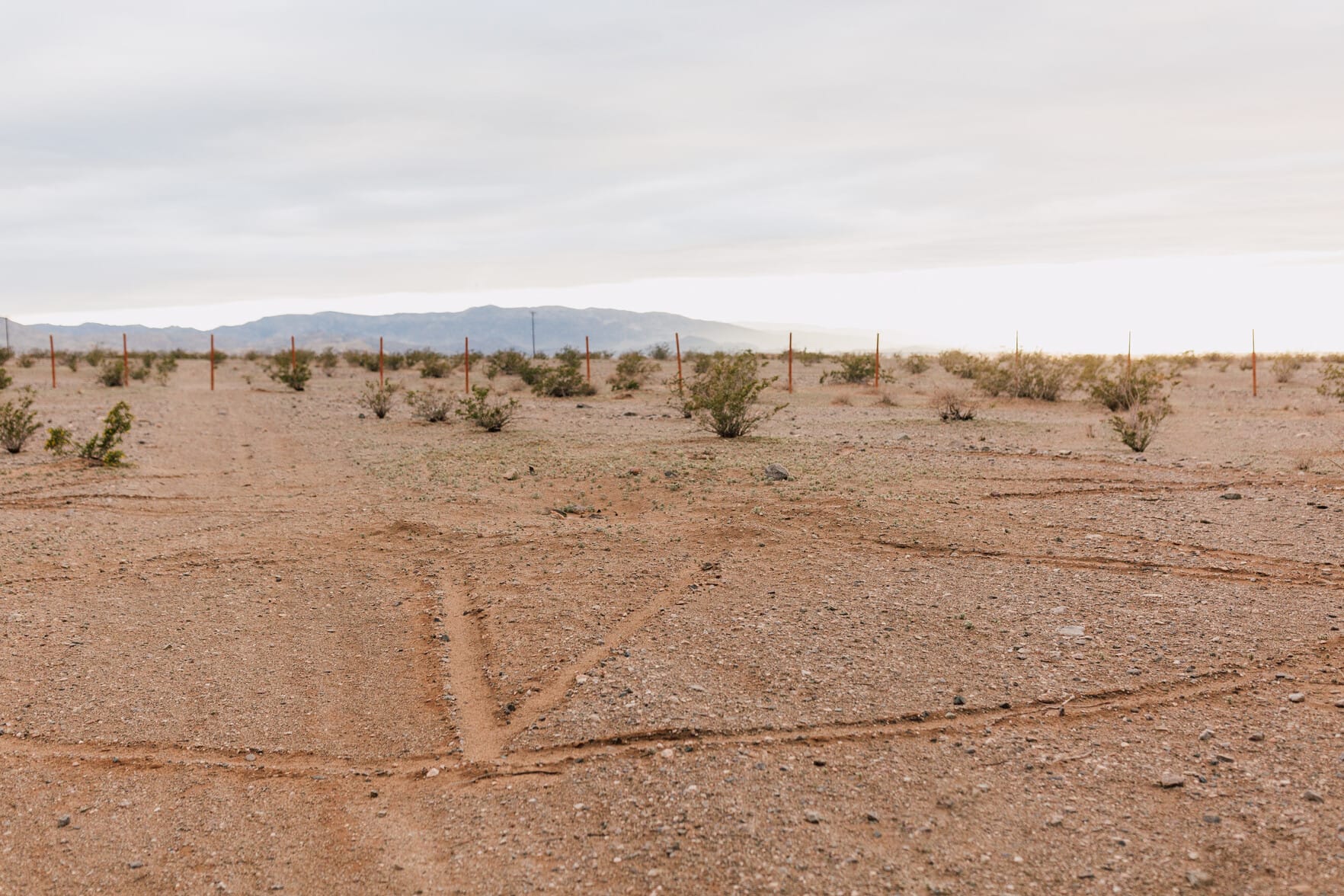
We wake each day delighted to continue our work, and enthusiastic about sharing the space with each new visitor. We look very forward to updating you, also, as we continue to shape this space and as we pause to reflect on each changing season.